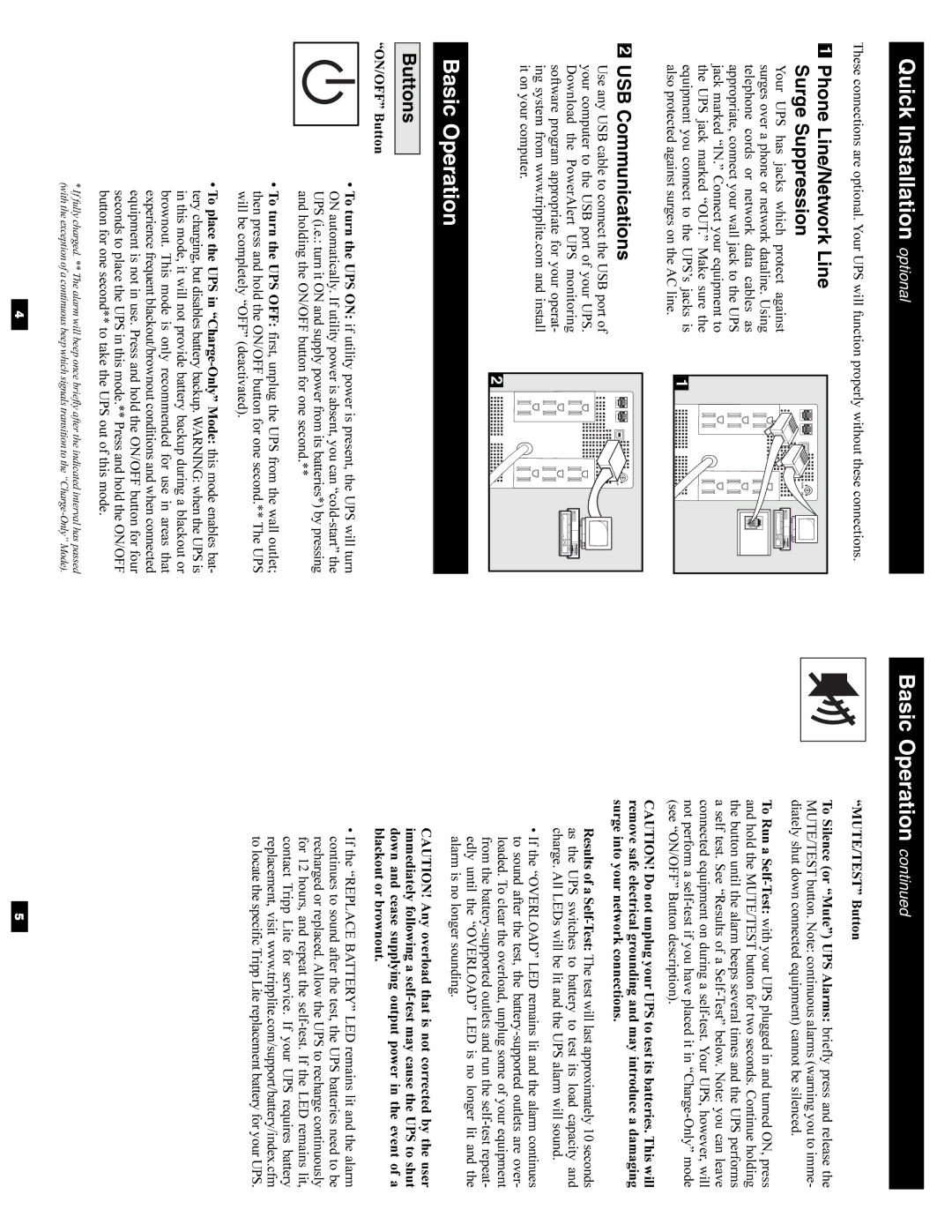
Quick Installation optional
These connections are optional. Your UPS will function properly without these connections.
Basic Operation continued
“MUTE/TEST” Button
1
Phone Line/Network Line Surge Suppression
Your UPS has jacks which protect against surges over a phone or network dataline. Using telephone cords or network data cables as appropriate, connect your wall jack to the UPS jack marked “IN.” Connect your equipment to the UPS jack marked “OUT.” Make sure the equipment you connect to the UPS’s jacks is also protected against surges on the AC line.
NORM | DELAY |
1 |
To Silence (or “Mute”) UPS Alarms: briefly press and release the
MUTE/TEST button. Note: continuous alarms (warning you to imme- diately shut down connected equipment) cannot be silenced.
To Run a
2 | USB Communications | DELAY |
Use any USB cable to connect the USB port of your computer to the USB port of your UPS. Download the PowerAlert UPS monitoring software program appropriate for your operat- ing system from www.tripplite.com and install it on your computer.
2 |
Basic Operation
Buttons
“ON/OFF” Button
•To turn the UPS ON: if utility power is present, the UPS will turn ON automatically. If utility power is absent, you can
•To turn the UPS OFF: first, unplug the UPS from the wall outlet; then press and hold the ON/OFF button for one second.** The UPS will be completely “OFF” (deactivated).
•To place the UPS in
tery charging, but disables battery backup. WARNING: when the UPS is in this mode, it will not provide battery backup during a blackout or brownout. This mode is only recommended for use in areas that experience frequent blackout/brownout conditions and when connected equipment is not in use. Press and hold the ON/OFF button for four seconds to place the UPS in this mode.** Press and hold the ON/OFF button for one second** to take the UPS out of this mode.
*If fully charged. ** The alarm will beep once briefly after the indicated interval has passed (with the exception of a continuous beep which signals transition to the
4
CAUTION! Do not unplug your UPS to test its batteries. This will remove safe electrical grounding and may introduce a damaging surge into your network connections.
Results of a
•If the “OVERLOAD” LED remains lit and the alarm continues to sound after the test, the
CAUTION! Any overload that is not corrected by the user immediately following a
•If the “REPLACE BATTERY” LED remains lit and the alarm continues to sound after the test, the UPS batteries need to be recharged or replaced. Allow the UPS to recharge continuously for 12 hours, and repeat the
5
